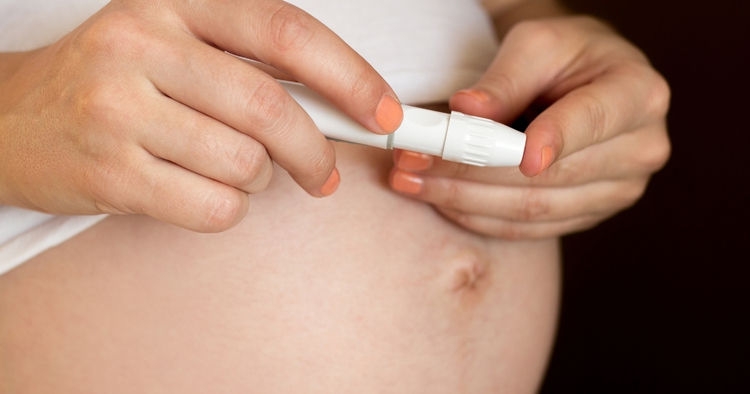Gestational diabetes affects between 3-14% of Australian pregnant women. Often gestational diabetes goes away after birth, but sometimes it can lead to birth complications or a diagnosis of type-2 diabetes later in life. With the right testing and management, you can lead a healthy life. Please note that this article does not constitute medical advice and you should always consult with your doctor.
How is Gestational diabetes different from type-1 and 2?
Diabetes is about how insulin behaves in your body. The insulin hormone converts glucose into energy by moving it from your blood into your cells. Diabetes blocks this process from happening, causing your cells to become resistant to insulin, meaning you have too much glucose in your blood.
Hormones from the placenta can make cells insulin resistant. The body should produce more insulin to counter this, though, in some pregnant women, this doesn’t happen which can lead to gestational diabetes.
How will I know if I have gestational diabetes?
Increased thirst or an increased need to urinate could indicate gestational diabetes. However, a lot of the time, gestational diabetes has no symptoms, so it is standard for pregnant women to be offered glucose level test between week 22 to 24.
The doctor will administer a Glucose Tolerance Test. You will be required to fast (usually overnight), and your blood will be taken before and after you ingest a glucose drink, to check for glucose levels in your blood.
Increased risk factors for gestational diabetes can include:
- Mother over the age of 35
- Mother above a healthy weight range
- Family history of type 2 diabetes
- Polycystic ovary syndrome
- Taking anti-psychosis medication
Gaining a healthy amount of weight during pregnancy may minimise the risk of developing gestational diabetes, so chat to your doctor about your weight range and diet plan.
Will gestational diabetes harm my baby or me?
If a pregnant woman has gestational diabetes, excess amounts of sugar and glucose can enter through the placenta and speed up the baby’s growth (called Macrosomia). Having a large baby can lead to birth complications, but your birth team will be prepared for this. You may be advised to opt for a caesarean birth.
If you have had gestational diabetes, the risk of developing type-2 diabetes later in life is increased for you and your child. Diabetes is a manageable condition, so if this is the case for your family, there are lots of resources, support and medication which can help you lead a full life!
How do I manage gestational diabetes?
- Healthy eating
- Physical activity
- Monitoring blood glucose levels
- Medication
Generally, a good diabetes diet involves eating small amounts regularly, rather than fewer but larger meals. Carbohydrates can be beneficial. Chat to your doctor and pharmacist about how best to manage gestational diabetes, and check out the National Diabetes Service Scheme’s fact sheet.
You can lead a healthy life as a person with diabetes. You will need to learn how to monitor your glucose levels, but this doesn’t take up much time in each day, and there are plenty of places to get support such as the NDSS and your health care professionals.
Recommended Articles:
https://www.babybunting.com.au/baby-talk-blog/what-to-expect-at-your-antenatal-appointments/
https://www.babybunting.com.au/baby-talk-blog/second-trismester-maternal-health/



